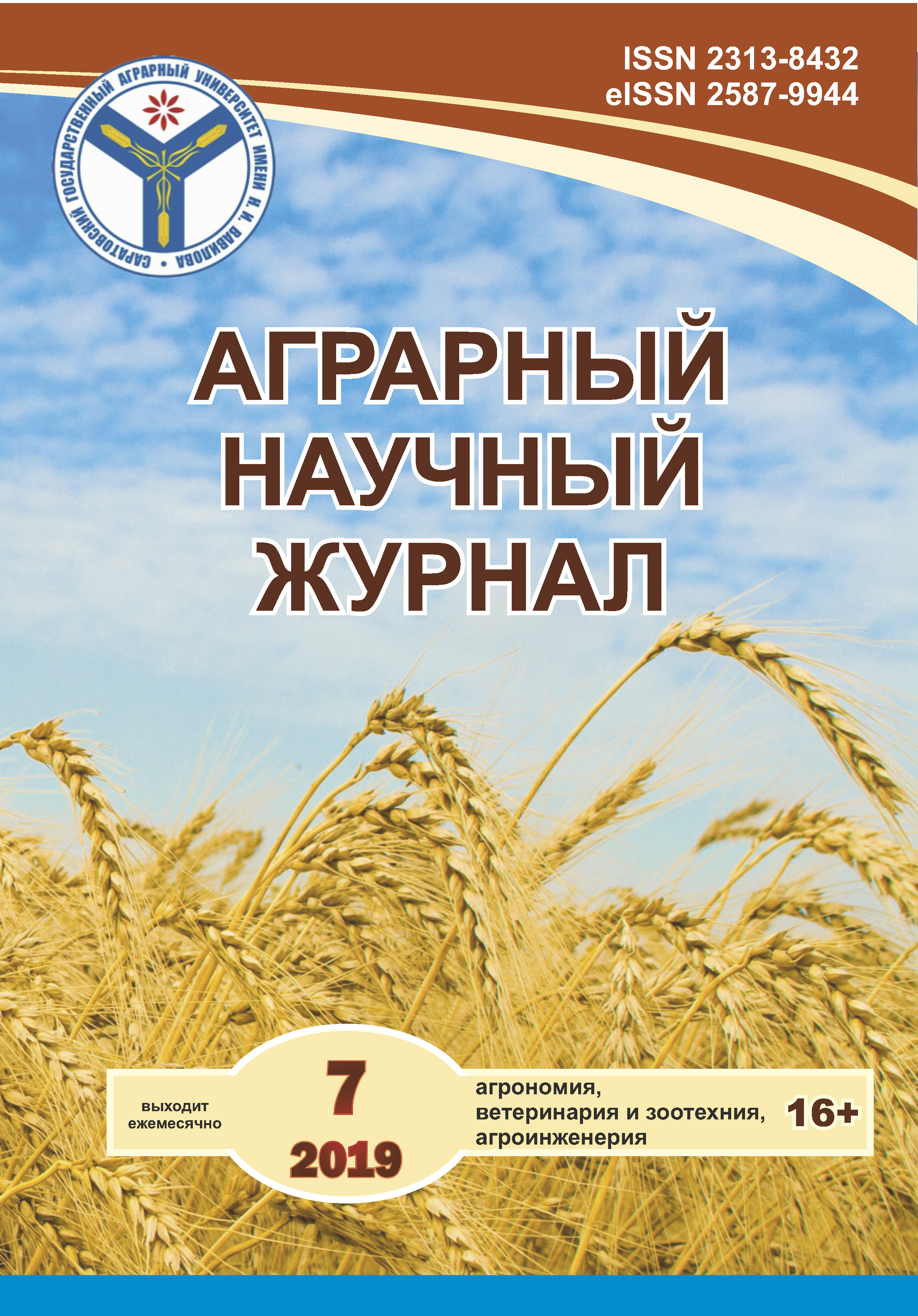Efficiency of the application of insectofungicide prestige for grain crops protection against harmful organisms
DOI:
https://doi.org/10.28983/asj.y2019i7pp34-39Keywords:
plant protection, insectofungicide, rhizoctonia root rot, bread fleas, grass flies, seed germination, productive bushiness, plant stand densityAbstract
The effectiveness of the insecticofungicide Prestige, KS, used to protect plants from damage by diseases and damage by pests in the first stages of ontogenesis is shown. Presowing seed treatment with a preparation with a flow rate of 2.5–3.5 l/t reduced the incidence of winter wheat with root rot of rhizoctoniosis etiology by 62.9%. The biological effectiveness of the Prestige, KS (3.5 l / t) on moderately infectious background was also quite high - 59.5%, however, it was 9.0% lower than the standard. It practically did not influence overwintering of plants. After application of Prestige, KS were in the norm of 2.5 and 3.5 l/t, and Maxim Extreme, KS in the norm of 1.75 l/t, the number of plants preserved by spring varied from 91.9 to 92.9%, that is higher than in the control by 3.9–4.9%. The application of insectofungicide Prestige, KS at a rate of 2.5 l/t on spring wheat sowings reduced the number of grain fleas by more than 80.0%and the damage of the stems by the larvae of cereal flies by 74.3%. This preparation is not phytotoxic with respect to cereals.
Downloads
References
2. Долженко В.И., Силаев А.И. Защита растений: состояние, проблемы и перспективы их решения в зерновом производстве // Агро ХХI. – 2010. – № 9. – С. 3–5.
3. Доспехов Б.А. Методика полевого опыта. – М.: Колос, 1965. – 351 с.
4. Жалиева Л.Д. Восстановление саморегуляции полевого агроценоза с помощью грибов из рода Trichoderma // Биологическая защита растений – основа стабилизации агроэкосистем: материалы Междунар. науч.-практ. конф. – Краснодар, 2008. – Вып. 8. – С.107–109.
5. Жученко А.А. Ресурсный потенциал производства зерна в России (Теория и практика). – М.: Агрорус, 2004. – 1109 с.
6. Итоги работы отрасли растениеводства в 2017 году и задачи на 2018 год. М., 2018. – 120 с.
7. Методические указания по регистрационным испытаниям инсектицидов, акарицидов, моллюскоцидов и родентицидов в сельском хозяйстве. – СПб., 2009. – 323 с.
8. Методические указания по регистрационным испытаниям фунгицидов в сельском хозяйстве. – СПб., 2009. – 380 с.
9. Мировой баланс зерновых. Food and Agriculture Organization (FAO UN), 2017. – 12 с.
10. Новые препараты для интегрированных систем защиты
картофеля от болезней в России / Л.Д. Гришечкина [и др.] // Материалы Междунар.науч.-практ. конф., посвящ. 40-летию со дня организации РУП «Институт защиты растений». – Минск, 2011. – С. 72–75.
11. Производство зерна в России по регионам, рейтинг 2017. – Режим доступа: WWW.Agrovesti.net.
12. Справочник пестицидов и агрохимикатов, разрешенных к применению на территории Российской Федерации. – М., 2018. – 853 с.








